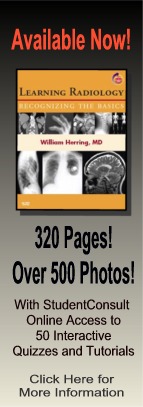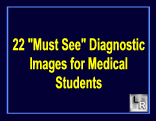| Cardiac | |
|---|---|
| GI | |
| Bone | |
| GU | |
| Neuro | |
| Peds | |
| Faculty | |
| Student | |
| Quizzes | |
| Image DDX | |
| Mobile | |
| |
Misc |
| Videocasts |
What's the most likely diagnosis?
- 34 year old with cough, fever and chest pain
- Congestive heart failure
- Cystic adenomatoid malformation
- Empyema
- Lung abscess
- Diaphragmatic hernia
Additional Image - Axial contrast-enhanced CT of chest
![]()
Answer:
3. Empyema
More (Click Discussion Tab)
Empyema
General Considerations
- An inflammatory fluid collection in the pleural space
- Occurs most frequently with bacterial pneumonia
- 20-60% of which are associated with a parapneumonic effusion
- Most parapneumonic effusions clear with pneumonia (90-95%)
- Some lead to pleural adhesions and an infected effusion—empyema
- Other causes of an empyema besides pneumonia
- Trauma
- Extension of an abdominal infection
- Rupture of a lung abscess
- Ruptured esophagus
- Chest tubes
- Frequently associated with anaerobic organisms introduced into lung by aspiration
This Week
Review some of the key "most common" findings and diseases in chest imaging as either an audio only, video only or both podcast; compliments Video Podcast 15-Cardiac-"Most Commons" |
A trim mobile version for your PDA or internet-enabled smartphone with handy lists of differential diagnoses, most commons and more
|
Key points on recognizing the most common fractures and dislocations |
Basic CT imaging of the brain focusing on the findings of cerebrovascular accidents |
The top diagnostic imaging diagnoses that all medical students should recognize according to the Alliance of Medical Student Educators in Radiology |
Recognizing normal and key abnormal intestinal gas patterns, free air and abdominal calcifications |
Some of the fundamentals of interpreting chest images |
| LearningRadiology.com |
| is an award-winning educational website aimed primarily at medical students and radiology residents-in-training, containing lectures, handouts, images, Cases of the Week, archives of cases, quizzes, flashcards of differential diagnoses and “most commons” lists, primarily in the areas of chest, GI, GU cardiac, bone and neuroradiology. |




